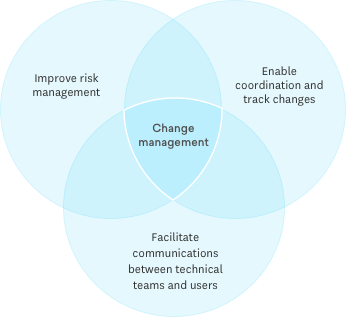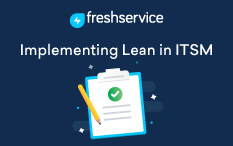Implementing Change Management Software
To realize the full value of your company’s change management software investment, a thoughtful implementation is essential. The two most important things to keep in mind when implementing change management software are:
- The software will automate the processes you define
- Over-time you will generate a lot of data that will need to be managed.
Every implementation plan will be different based on the unique nature of your company culture, delivery processes, IT environment and change management objectives.
Process Automation
The first area to focus during change management software implementation is process and business rule simplification. Don’t just automate a broken process – it will still be broken. Look for opportunities to optimize your process by eliminating un-necessary steps, reducing the number of process variants through standardization, leveraging templates and automating decision rules to avoid manual data-entry tasks.
Integrate change management software with your engineering and project management tools to provide closed-loop change management processes that span the entire change lifecycle. This is particularly important if your organization leverages (or intends to implement) agile, scrum or DevOps methodologies. Integrations enable project team members to prepare changes without the delays of a separate change request process.
Avoid restricting activities in your change management software to a single user (such as a change control board facilitator). This creates bottlenecks in your change management process. Instead, leverage automation to enable process scalability. If you still think you need to have a person involved, understand the potential capacity constraints and have contingency plans if that person is not available.
Data Hygiene
Ensure you have a plan to manage data hygiene regularly. Over time, as your change management process executes, there will be a lot of transactional data that gets generated. Just because you needed the information to make a decision, doesn’t mean you need to keep it forever.
- Projects will be completed and/or cancelled and when they are, you will want to address any lingering change related data.
- Much of the supporting data that was imported into your change management software is available elsewhere (in source systems or a data warehouse). Consider replacing copied data with pointers back to the source if it has not been modified.
- Most data becomes obsolete over time, losing its meaning and usefulness in decision making. A good archive/purge strategy is essential.
Process optimization and planning for data hygiene are both activities that should be performed as part of change management software implementation. It is far better to have clean processes and data to begin with than to have to go back and clean up a mess later.






















